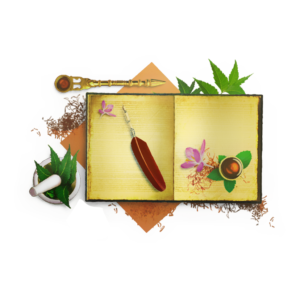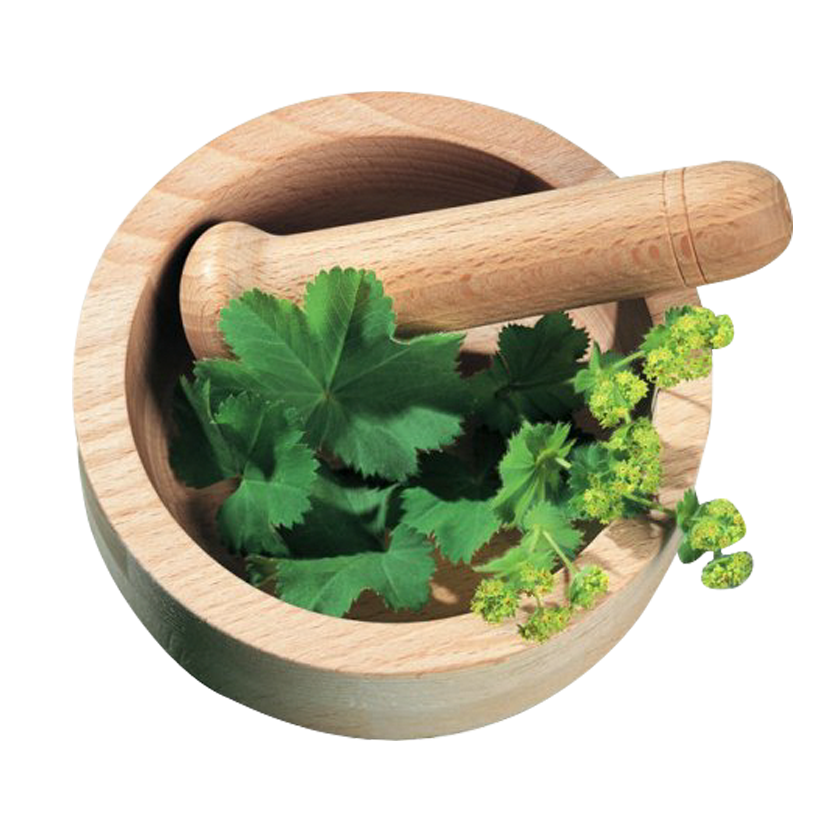
About Ayurveda
That system of medicine is called Ayurveda, the Science of life, where wholesome,unwholesome, happy and unhappy life are described along with the things which use happy or unhappy life as well as the parameters to assess these four types of life spans.
‘Ayu’means life span. ‘Veda’ means knowledge
‘Ayurveda’ means knowledge of life
Ayurveda is a science of life and not a meretherapy. Ayu means life and veda means knowledge. It is said that the Lord Brahma himself transferred his knowledge of life to the sages many thousands years back. Ayurveda, thus is considered as a divine science and is a upaveda of Atharvaveda. The science was then taught to various group of sages,discussed in seminars, subjected to tests and experiments and transferred to knowledge seekers over the years during different periods like vedic period,puranic period, pre independence and post independence.
“Ayurvedam Upavedamatharvana”
There are 4 Vedas :
- Rigvedham
- Yajurvedam
- Samavedam
- Atharvavedam


Purpose
Ayurveda was evolved and projected for the relief of the human from various miseries. protecting the health of the healthy person and curing the disease of the sick –these two are the main two purposes of this science. Equal emphasis has been laid upon preventing the diseases as well as curing it.
Compendia
All ancient original texts are in Sanskrit The major compendia are Charaka Samhita, Susruta Samhita,Ashtangasamgraha and Astanga Hridaya. Others include Yogaratnakara, Madhavanidana, Sharangadara Samhita Bhavaprakasha.
Concept of Health
Man according to Ayurveda is not just a physical body. His very existence is based on three prime factors called satvam(mind), Atma(soul) and the Sareeram( body). Health is defined as a state of balanced doshas (humours), healthy agni(digestive fire), a good state of tissues and their metabolic end products in the presence of blissful state of the senses, mind and spirit.
Basic Principles
Panchamahabhutas
Human body is composed of five basic elements namely—Prithvi ( earth), Jala(water), Agni(fire), Vayu(air) and Akasha(ether). Man thus is the replica of the nature itself. What happens in the nature will happen within the body also. The panchabhoutic body is nourished and sustained by the panchabhoutic food.
Tridoshas(Three Body Homours – Three Pillars of the body)
The five elements are being represented in the body by three primary energies called Vata, Pitta and Kapha .Vata is the master dosha and governs all functions of the body, both physical and mental. Pitta is responsible for all stages of digestion and metabolism.Also it responsible for the intellect and analytical power. Kapha impartsstability to the body as well as to the mind.
Tridoshasthus do the functions in the body as the sun, moon and the air sustain the whole universe. Their abnormality therefore disturbs the functions of the body and leads to various diseases.
Sapta Dhatus(Seven Basic Tissues)
Physical body is composed of seventissues viz. Rasa(plasma), Rakta(blood), Mamsa(muscle), Medas(fat tissue),Asthi(bone), Majja(marrow) and Shukra(semen). The excellence of all tissues is very essential for maintenance of health. The food which constitutes all nutrients helps to build up the qualities of respective dhatus. They loose their qualities when not supported by proper food or when vitiated by doshas. Dhatus then become part in diseases process.
Malas (Waste Products)
Pureesha(faeces),mootra(urine) and Sweda(sweat) are the main three excretes of the body. Every tissue metabolism gives out the essence that is needed for nourishment of thenext tissue, a byproduct and some excreta. Thus Kapha (phlem) is the excreta of Rasa, Snayu(ligament) is the excreta of the medas(fat tissue) and so on.
Agni
Digestion and metabolism takes place with the help of an energy called Agni(digestive fire) The food on consumptioncomes in contact with the Agni, first in the stomach and gets disintegrated into simpler forms. The ahara rasa (product of first part of digestion) then reaches the dhatus one by one gets digested by the each Dhatu agni( digestivefire at each tissue). The final products are then assimilated by ech and every part of respective tissues.
Srotases (Channels)
The movement of nutrients to varioustissues takes place through several channels which are of different size andshape according to the functions they have to perform.
Prakriti (Constitution)
Ayurveda approaches the individual from a different perspective which is very unique. Each individual has got aconstitution based on the dominance of tridoshas at the time of conception.Some are of vata-pitta prakriti, some have kapha vata prakriti and so on.Characters of a person in terms of physical body, appetite, tendencies, mental attitudes etc. depend upon the prakriti of the person.
Ayurveda advocates right conducts which enable the person to become more satvik which ultimately makes him more healthy and leads to the greatest happiness ie.moksha.
Preventive Medicine
Onehas to follow the principles of Ayurveda in order to prevent the occurrence of diseases. Swasthavritta(regmen which keep the person healthy) is one of the main section of Ayurveda wherein basic principles for maintenance of health are described. Principles of diet, daily regimen and seasonal regimen are a few important areas in swasthavritta.
Diet
Dietplays an important role both in healthy and diseased conditions. It is the fundamental factor for keeping doshas in a balanced state.Food having qualities similar to those of doshas and dhatus will enhance them and vice versa.
Ayurveda does not advocate an uniform balanced diet. It is told that a man’s diet may be another’s poison. Each individual is unique. His diet must be planned in relation to many factors like, his constitution, digestive capacity, bowel habits, body strength, mental status. Quality of the food and time factor like day-night, season etc. Ideally the food must constitute all the six tastes viz.madhura(sweet), amla(sour), lavana(salt), katu(pungent), tikta (bitter) and kashaya(astringent).Also emphasis has been given to the method of cooking,selection of vessels, interval between two consumptions, method of eating etc.
Dinacharya (Daily Regimen)
Daily Regimen begins with waking up at Brahma muhurtam and includes variousprocedures like danta dhavana (brushing), abhyanga (oil massage), snana (bathing), anjana (colyrum to eyes), nasya (nasal instillation of oils) etc.These enable the body to get rid of the waste regularly and keep the body, mindand the sense organs in optimum healthy condition.
Ritucharya (Seasonal Regimen)
We know that the nature around us changes regularly according to various seasons.Similarly the internal environment of the body also changes. The digestive power is maximum during hemanta (winter) but is poor in greeshma(summer).Tridos has vitiate and subside in different seasons. It is therefore very essential to adopt a proper regimen which will protect the body from the onslaught of seasonal changes.
Role of mind in health
Ayurveda gives equal importance to mental health as for physical health for man cannot be considered healthy if he is not sound mentally. Mind has got three domains:satva(enlightment), rajas(turbulent) and tamas(darkness).A person may have dominant satva or rajas or tamas and is called as satvik, rajasik and tamasikrespectively.
Ayurveda advocates right conducts which enable the person to become more satvik whichultimately makes him more healthy and leads to the greatest happiness ie.moksha.
Diseases
Imbalance of tridoshas is called as disease. Improper diet, inappropriate working pattern, suppressing the natural urges, not controlling the emotions, effects of seasonal changes etc are the main causative factors. Role played by the infections, injuries and genetic fators is also discussed in detail.
Tridoshasvitiate due to the causes mentioned above, they move to different parts of thebody through channels,vitiate the tissues and result in the manifestation ofthe disease.
Vyadhikshamatva (Immunity)
Itis worth noting that not all persons who come in contact with the cause becomesick. The disturbed tridoshas may not lead to the disease process if the immunepower of the person is strong. Immunity thus enables the person to resist thedisease as well as to resist the effect of the diseases, if occurs. Geneticfactors, constitution, food and other regimen etc. influence the immunity ofthe person.
Disease Management
A disease, for example fever, manifests in different forms in different persons.A detailed examination of both the patient and the diseases is mandatory forplanning the treatment which is of three types :
- Yuktivyapasraya (administration of medicines and diet)
- Daivavyapasraya (various religious rituals)
- Satvavajaya (psychotherapy)
Ayurvedic way of managing diseases involves :
- Avoiding the cause
- Breaking the pathology by — correcting the digestive fire, purification and pacification
- Enchancing the immunity by–rejuvenation with proper regimen
Branches of Ayurveda

There are 8 branches :
- Kayachikitsa – General Medicine
- Salyachikitsa – Surgery
- Balachikitsa – Paediatrics
- Damshtrachikitsa – Toxicology
- Grahachikitsa – Demonology
- Jarachikitsa – Geriatrics
- Urdwangachikitsa – (Eye, Ear, Nose, Throat)
- Vrushchikitsa – Virilification Therapy
